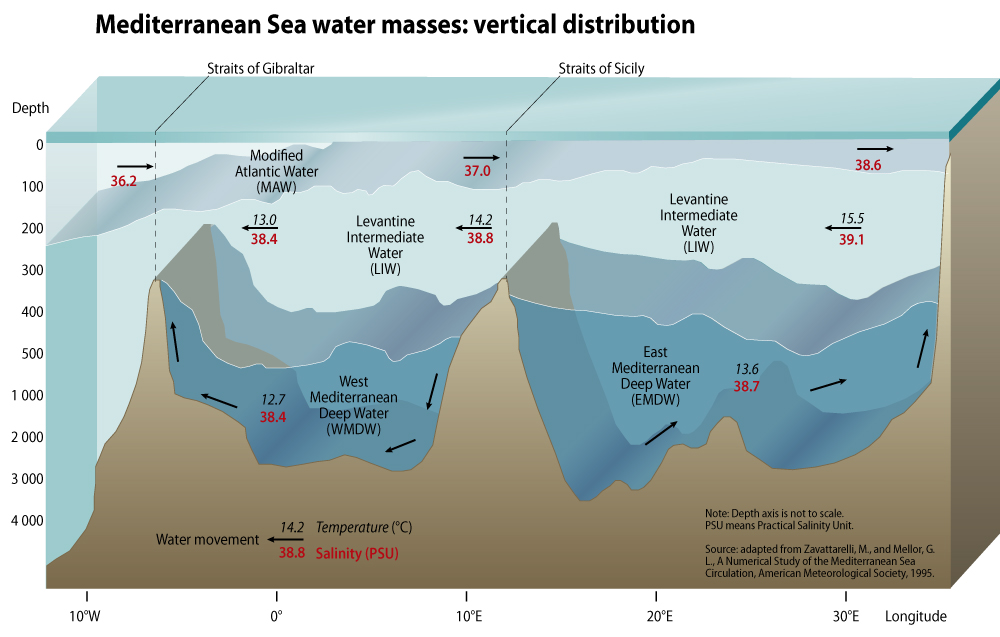I would like to chip in another two ideas.
Before the discharge, the seawater with the wasted thermal heat is desalinated by thermal methods. After the desalination, the warmer-than-seawater processed but much saltier water is discharged into the Depression. In this alternative end, the warmth still help the saltier water evaporate as in the original plan in the Youtube video.
Then what to do with the desal water, one can ask?
I would use the desal -- still saltier than freshwater --- to grow cotton. So this is not the common desal water but more similar to slightly salty water. I would imagine cotton is more salt tolerant the food crops. As this processed water is not the common desal water, the demand and thus cost on the desalination process are less than common. (Thus from now on, I am calling it processed water.) Please note all plant -- cotton and food crops -- needs potassium and magnesium so that desal process can seive specifically potassium and magensium from the warm wasted water from the nuclear plant into the processed water. Then the Nile irrigation can go back to its original function about food crops. In the end, Egypt would have cotton, food crops and electricity to supply domestic and regional demand and market. Common sense suggests that all three productions are going to raise the national economical power.
Plus if the Mediterranean mineral salt -- sodium, chlorine, potassium, magnesium and other minor ones --- from the much saltier water are sold, there is a fourth revenue but as the nearby Dead Sea between Israel and Jordan are selling minerals already, this revenue is both a blessing and a ticket for issues. On one hand the original environment of the Dead Sea has been hurt by evaporation salt mining but on the other hand the desal effort is working on seawater: the Lake Qattara does not exist originally. So the market share of Egyptian Qattara salt mining is going to help save the Dead Sea because a lesser demand for mineral product from the Sea and hence less exploitation.
However, on that national scale of filling the Depression with saltwater to generate economic values for the Egyptian nation, politics of international affairs are bound to happen. For history, please look at recent how Ethiopia, Sudan and Egypt quarrel about damming the Nile.
A fifth but much less profitable revenue is the selling of sea salt -- the sodium chloride from evaporating the discharged processed water... how much is a bag of salt in a market....
Before the discharge, the seawater with the wasted thermal heat is desalinated by thermal methods. After the desalination, the warmer-than-seawater processed but much saltier water is discharged into the Depression. In this alternative end, the warmth still help the saltier water evaporate as in the original plan in the Youtube video.
Then what to do with the desal water, one can ask?
Plus if the Mediterranean mineral salt -- sodium, chlorine, potassium, magnesium and other minor ones --- from the much saltier water are sold, there is a fourth revenue but as the nearby Dead Sea between Israel and Jordan are selling minerals already, this revenue is both a blessing and a ticket for issues. On one hand the original environment of the Dead Sea has been hurt by evaporation salt mining but on the other hand the desal effort is working on seawater: the Lake Qattara does not exist originally. So the market share of Egyptian Qattara salt mining is going to help save the Dead Sea because a lesser demand for mineral product from the Sea and hence less exploitation.
However, on that national scale of filling the Depression with saltwater to generate economic values for the Egyptian nation, politics of international affairs are bound to happen. For history, please look at recent how Ethiopia, Sudan and Egypt quarrel about damming the Nile.
A fifth but much less profitable revenue is the selling of sea salt -- the sodium chloride from evaporating the discharged processed water... how much is a bag of salt in a market....
Last edited:
